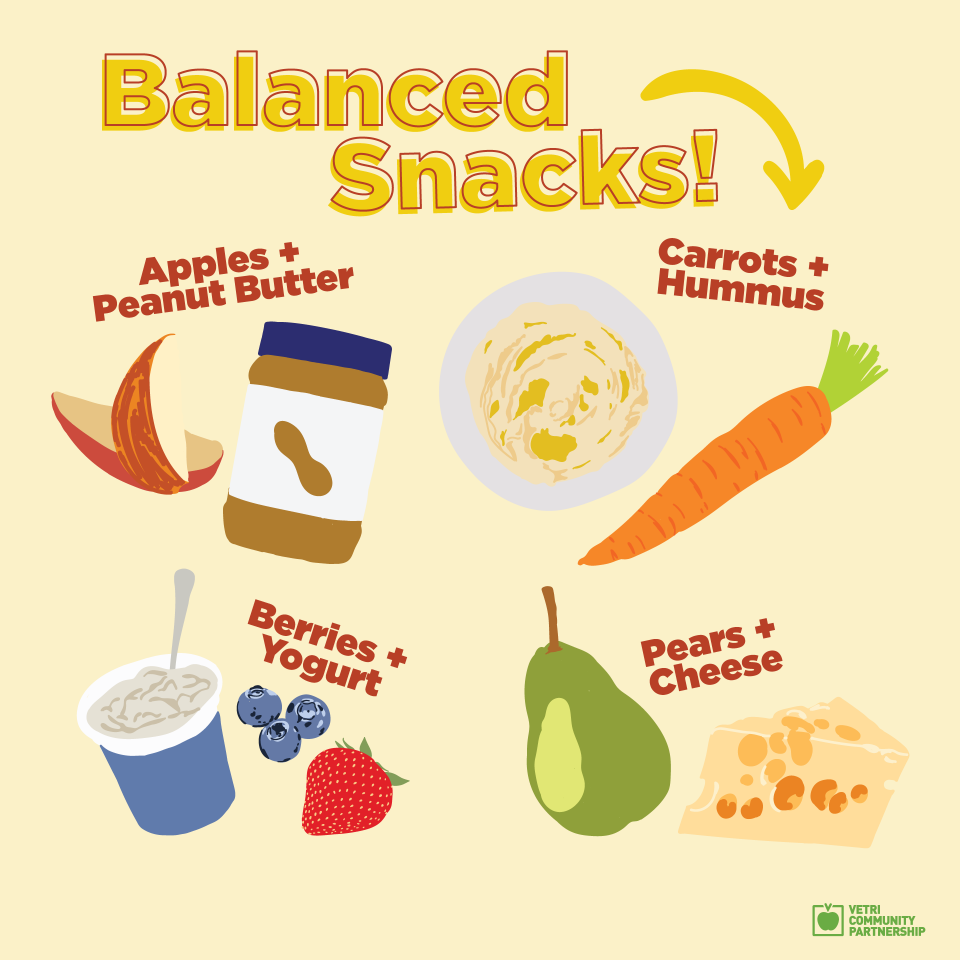As families get back into the swing of school schedules and meal planning, one meal that’s often overlooked is the mighty afterschool snack. Snacks can come in a wide variety of forms and flavors, but a key component of building nutritious snacks includes balancing your plate with a protein.
Building a Balanced Plate with VCP Nutritionist, Tara Bledsoe, MS, RDN, LDN
What does it mean to have a balanced plate and why is it important?
Having a balanced plate helps us to eat from all five food groups, creating a nutritious eating pattern for a healthy life. Each food group provides our bodies with different nutrients, whether they are macronutrients like carbohydrates, protein, and fat, or micronutrients, like vitamins and minerals. MyPlate recommends filling half your plate with fruits and vegetables, a quarter each for grains and protein, and add a serving of a low-fat or fat-free dairy or calcium-fortified alternative on the side.
Why protein and why are some high-protein foods healthier than others?
Protein fills you up for longer, keeping hunger at bay until dinner time. For protein foods, MyPlate recommends focusing on lean or lower fat protein options. This includes seafood, chicken, turkey, lean cuts of beef, pork loin, legumes, nuts, and seeds. Eating a variety of lean protein foods is a healthier choice to lower your intake of saturated fats and cholesterol, thereby lowering your risk for coronary artery disease. Including plant-based proteins in your diet, such as beans, peas, lentils, nuts, seeds, and soy products, also improves heart-health and aids in digestion by providing much-needed fiber.
If someone does not consume dairy, how can they make sure they are getting enough calcium?
Calcium is essential for building strong bones. While dairy products are calcium-rich, these foods may not be an option for some due to intolerances, allergies, or lifestyle choices. Using the nutrition facts label, choose foods that contain at least 10% of the Daily Value of calcium,
such as calcium-fortified plant-based beverages, fortified juices, or cereals. Other great sources of calcium include almonds, canned salmon, calcium-set tofu, and leafy greens like kale, collard greens, and bok choy.
How can one add more vegetables into their day?
Breakfast is often a missed opportunity for taking in more vegetables! Dark leafy greens like spinach or Swiss chard are great in a frittata. Oatmeal can become a vehicle for vegetable consumption by adding in canned pumpkin! Make vegetables an easy choice for snack or lunch time. Create a stash of raw vegetables for the week, like carrot sticks, radishes, bell pepper strips, or cherry tomatoes that you can quickly grab and go. Plan dinner around vegetables that are in season and make them the star of the meal!
Snacks are another great opportunity to eat from every section of the MyPlate recommendations! Try this formula of pairing fruits and veggies with a high-protein ingredient for filling and delicious bites and search our website for easy snacks you can make at home:


